Listen to “What’s to Come for the 4800 Block of South Drexel Boulevard”
Story by: Emeline Posner Read by: Chima Ikoro Produced by: Erisa Apantaku Music by: Blue Dot Sessions
Listen on Soundcloud
When Johnnie Railey looks out the window of her apartment in the senior home on 48th Street and Cottage Grove Avenue, she sees the back of her former home, the Tudor Gables, and wonders what’s to come of it.
Across the alley, the rusty-red brick of the building’s back walls, a stretch of roof, and the tips of the white ornamental spires rise from the courtyard building’s front. Three of the spires are still missing, as they have been for years.
The Tudor Gables, a longtime Black-owned housing cooperative on Drexel Boulevard, has been empty now for two years, undergoing renovations. But Railey still gushes when she talks about the building, with its red-and-white stucco facades and the slate tile roofs that face the boulevard. “I just never seen a building designed as beautiful as the Tudor Gables,” she said. Railey bought into the cooperative in 1988 and for years helped run a building support group called the “Benevolent Club.” Now eighty-eight, she thought she’d live out the rest of her days there.
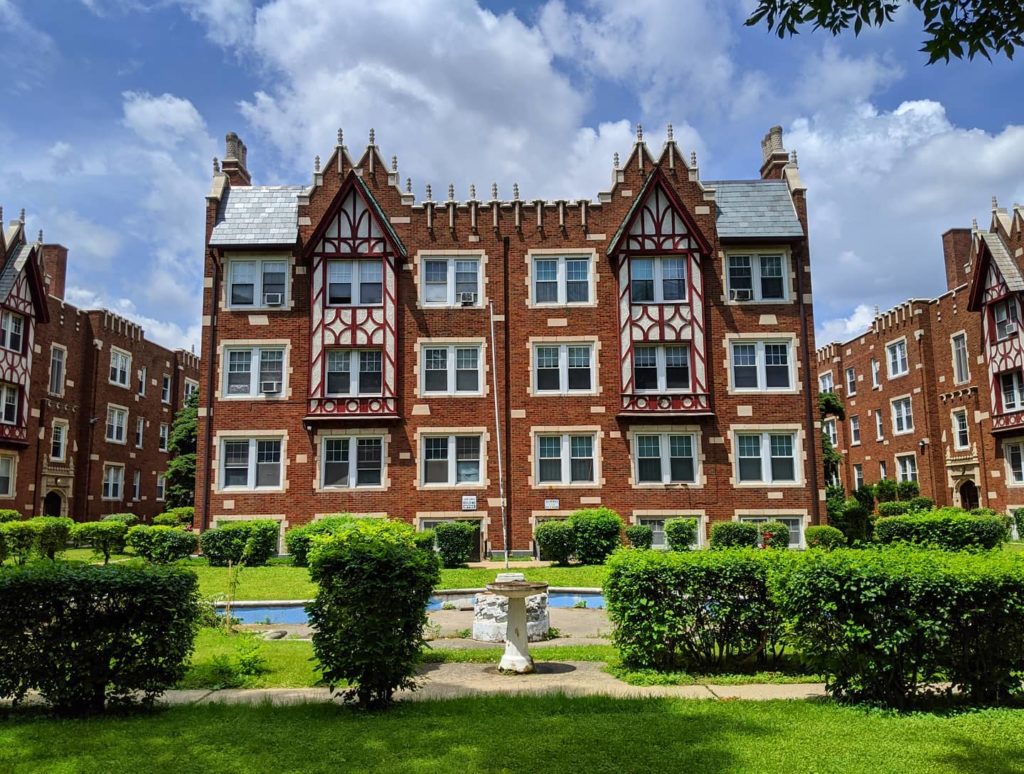
Then, in the fall of 2020, the co-op board received an off-market offer on the building. The board president urged members to vote to sell, citing financial distress and fear of foreclosure. “It was just a shocking thing,” Railey said of the sale. “Everybody seemed to love [the building] so well.” Some members told the Herald/Weekly they felt serious reservations, or grief, or anger, about the prospect of selling, but in the end, the vote to sell passed.
When the board of the Gables signed off on closing documents in March 2021, it threw a spotlight on the health of the neighborhood’s collectively owned housing.
From the 1950s up until the sale of the Tudor Gables, there were more owners than renters on the west side of the 4800 Drexel block. In two years, that ratio flipped.
In 2019, the city pulled the next door townhome association, along with another association several blocks to the south, into the Troubled Buildings Initiative, an interagency program that allows the city to intervene in at-risk or abandoned buildings. Townhome associations are another form of collectively owned housing, or common-interest development (CID), as they’re often referred to in legal circles. Both associations have been struggling for years with building code violations and operations, according to city spokespeople.
These three buildings aren’t alone in struggling to keep up. Housing experts say that CIDs across the city have become vulnerable to failure as their buildings and original owners age. In the last decade, that stress has been compounded by developer interest. As interest rates dipped and it became profitable to convert collectively owned buildings into rentals, developers zeroed in on CIDs, buying out hundreds of condo buildings across the city.
The result is that CIDs, which have long been avenues for building wealth by low- and medium-income Chicagoans, are increasingly being replaced by apartments, with rents far outpacing what many can afford.
Now, as 312 Properties prepares to lease out 116 units in the former Gables co-op, a city-selected developer is getting started on renovations of five vacant units at the sixty-four-unit Drexel House and Gardens next door. The two buildings offer diverging visions for the future struggling CIDs may face, and with them the fate of some of the city’s affordable housing.
The 4800 block of Drexel Boulevard isn’t an outlier in Kenwood. More than one of every four housing units in Kenwood is a condo, according to DePaul University’s Institute for Housing Studies. If you factor in units in nearby co-ops and townhome associations, which are classified differently, close to one in every three housing units in the neighborhood is under some form of collective ownership.
Co-ops, condos and townhome associations have different ownership structures and histories. But what they have in common is that they’re often more accessible to a wide spread of people: single-parent households, young people, lower-income families, retirees and others living on fixed-incomes. Buying a share or unit in an association tends to cost much less than a standalone single-family home, and the collective structure allows members to share the burden of repairs and maintenance, reducing each individual household’s share of expenses.
Cooperatives have often been singled out as the most promising CID for expanding affordability. A 2004 report from the University of Illinois-Chicago’s Voorhees Center found that co-ops, and in particular affordable co-ops, were an important part of the affordable housing landscape in Chicago. At the time, city rents and single-family home prices were already outpacing wages. As a result, lower-income residents were at risk of becoming rent-burdened or displaced from the city altogether. Co-ops, the report concluded, offered a way for residents to create a bubble of affordability in an increasingly unaffordable city.
The report also found that the city’s existing co-ops had sustained themselves despite lacking educational resources, access to banks that would lend, and policies that would support their development and maintenance. The authors recommended a number of policy changes to expand opportunities for co-op ownership, on both the city and state levels.
The report’s project manager, Yittayih Zelalem, said that there have been small, piecemeal efforts by different entities to provide policy support. But in the time since, previous avenues of federal support for co-ops have ended or waned. The grassroots organization that requested the 2004 report, the Chicago Mutual Housing Network, folded several years ago, ending a source of support.
“We really need to promote the possibility to gain equity from [people’s] investment in housing,” said Zelalem, who is currently co-director of the Voorhees Center. “Some of the co-ops that exist today are really not supported by policy, but by the commitment of the initial owners who fought to bring it to fruition.”
The Tudor Gables is one of at least six co-ops to sell in the last decade, data from the Assessor’s Office show. All but one of the buildings are on the South Side, between Bronzeville and South Shore.
The sale of the Tudor Gables was not an easy decision for members to vote on. Some said that they voted to sell because they felt they had no real choice. Accepting the offer from 312 would mean receiving a payout for their unit and relocating. But if they rejected the offer and the building continued to struggle financially, they would risk possible foreclosure and likely have to relocate anyway—potentially without compensation for their shares.
But after the vote to sell passed in September 2020, what they weren’t expecting was for the transfer of ownership to be disruptive and traumatic. Without warning, members said the board withheld around 40 percent of members’ payouts in case of tax liability. After 312 Properties assumed ownership of the building in March 2021, they gave members three months to relocate from the building.
Some members were unable to locate new housing in that timeframe, and stayed in the building past the move-out deadline, as the Herald previously reported. Residents said that 312’s contractors took the doors off the building’s main entrances—allowing scavengers to come in and remove items from the building—shut off utilities and began a gut rehab while people were still living in the building.
In a statement, 312 wrote that “rehab work of vacant units started when there were over 112 of 116 empty apartments with proper plans, permits, and procedures in place,” and denied that utilities were ever shut off at the property. Public records show that a no-water complaint was filed via 311 on July 16, and that the Department of Water responded to a water shut-off request on August 2; two residents reported still living in the building at the time.
It’s not just at the Gables that residents have questioned 312’s commitment to safe housing and tenants’ rights. At another building just two blocks down from the Gables, former tenants detailed a similar transfer of ownership process, alleging that the company constructively evicted tenants with valid leases by performing extensive interior demolition and shutting off utility service to the building. The case, filed in 2019, was settled under a confidential agreement in January 2021.
The company owns five properties on Drexel, and eleven others in nearby neighborhoods, according to property records. At some of these sixteen buildings, tenants have reported serious rodent infestations, leaks, mold, sewage backups and unsecured entrances, as well as unresponsiveness and inadequate repairs from management. Last December, tenants of the 4520 S. Drexel Blvd. building reported that the heat went out and pipes burst during an extreme cold snap over Christmas weekend, flooding several apartments, NBC reported. Earlier this year, the city filed a lawsuit against 312 for the housing conditions at the 4520 building.
312 co-owner Raphael Lowenstein said that they take building issues and tenant concerns seriously and are working to resolve the lawsuits. “[The pipe ruptures] was an unfortunate situation that we’ve learned a lot from … We’ve remedied almost everything on that docket and are hoping to be out of court soon,” Lowenstein said.
When asked why tenants should want to live in the Tudor Gables despite the company’s track record with building code violations, co-owners Raphael and Ariel Lowenstein said they have improved upon construction methods and contractor relations. That, they say, will be reflected in improvements to the building’s intercom wiring, porches, and plumbing systems. They also plan to have maintenance staff living on site at the Tudor Gables.
(In May 2022 the city cited 312 for using unlicensed plumbers during rehab work at the Gables. 312 said that this was due to a “miscommunication” and have since come into compliance. “We only work with licensed contractors,” an emailed statement reads.)
“We want to bring the building back to, you know, being just a beautiful building on the block that has a great story and a great history,” Raphael Lowenstein said.
The Gables wasn’t technically an affordable or limited-equity co-op, the type of co-op that the Voorhees Center focused on in its 2004 report. But it was de facto affordable. For the majority of the last two decades of the co-op’s operations, the monthly assessment that members paid hovered between $300 and $600, depending on the size of the apartment. That allowed members across various income levels, including those on fixed incomes, to live there comfortably.
Kenwood, like the rest of Chicago, has seen rents and property taxes continue to rise. The average rent in Chicago hit a high-water mark in November 2022 at $1,925, Forbes reported, and rental rates on Drexel aren’t far behind.
When the Gables opens as rental housing, apartments will range from $1,650 to $2,500, the building’s new owners, 312 Properties, said. Next door at the Paramour Apartments, 4850 S. Drexel Blvd., Mac Properties rents its units for about the same rate, according to the company’s listings.
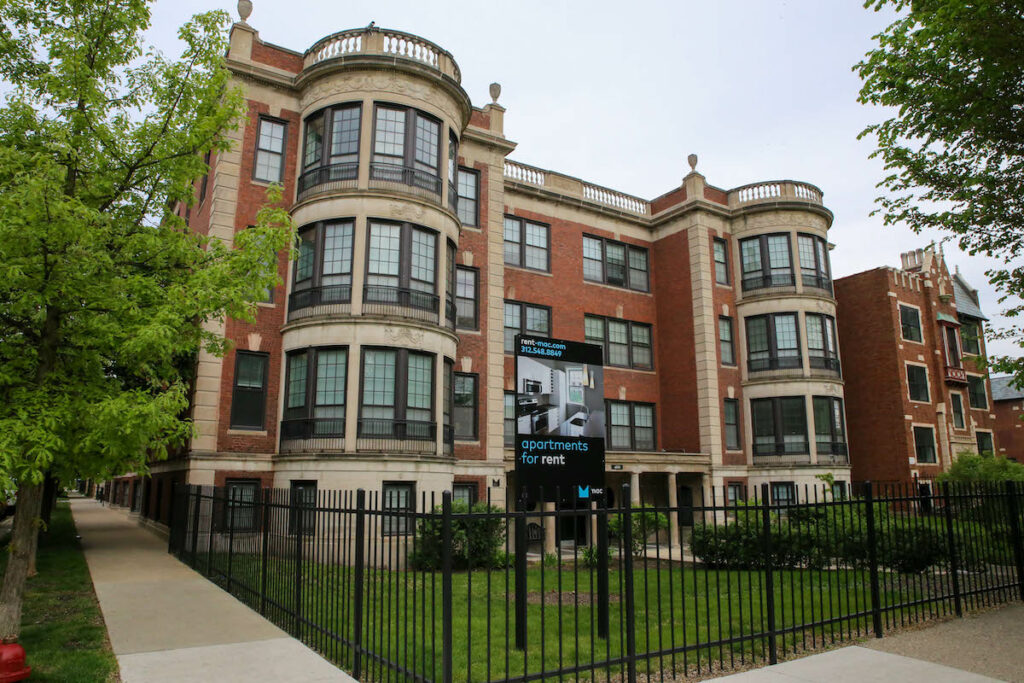
As wages remain stagnant, residents’ housing burden is increasing.
Roderick Wilson, executive director of the community organization Lugenia Burns Hope Center, says that this is a major concern. In nearby Bronzeville, Wilson says he has been hearing from renters about dramatic rent hikes, sometimes as high as twenty percent.
Wilson says that the combination of market-driven rents and an unlivable minimum wage produces displacement and neighborhood instability. “When we have rising costs, you have shifting populations, people become transient,” Wilson said. “Who can afford it now can’t afford it next year.”
Many former Gables members moved out of the neighborhood. Some relocated to nearby Bronzeville, others to Hyde Park or South Shore, and others yet out of the city or state.
Railey, the Gables owner of forty years, said she felt lucky to be able to relocate nearby, to the senior home across the alley. “It was just a miracle,” she said. “I certainly was then hoping that I wouldn’t have … to move into a new neighborhood that I didn’t know anything about.”
As rents and property taxes rose and new developments were approved, neighborhood leaders saw it as an essential time to intervene in other CIDs showing signs of crisis.
“There’s a legitimate fear that people are being displaced,” said Prentice Butler, chief of staff for outgoing Ald. Sophia King (4th). “We have to make sure we are stabilizing and protecting longtime residents from the burden of rising taxes.”
Back in 2019, the ward office started meeting with residents of two struggling townhome associations on Drexel to chart a path forward. That led to coordination with the Department of Housing to pull the two buildings into court and, through the city’s Troubled Building Initiative, re-establish board leadership and rehab parts of the properties.
One of these two townhomes sits directly to the north of the Tudor Gables building. The Drexel House and Gardens was built in 1954-55 by architect Bertrand Goldberg, who wanted to show that it was possible to create housing that was well-designed and affordable, without subsidies. The sixty-four townhomes fill a parcel that takes up a third of the block. Two long rows of townhomes run down the parcel’s center, with four smaller pods of townhomes to the north and the south. In archival pictures, the development looks utopian, like a campus or a mini-city.
In the last decades, Butler said, the buildings have accumulated code violations and complaints from ward constituents alleging that drug dealing was happening on the property. The Drexel House and Gardens had several units boarded up, and the wall at the property’s back edge was crumbling. He also said that the association was not functioning as it was supposed to.
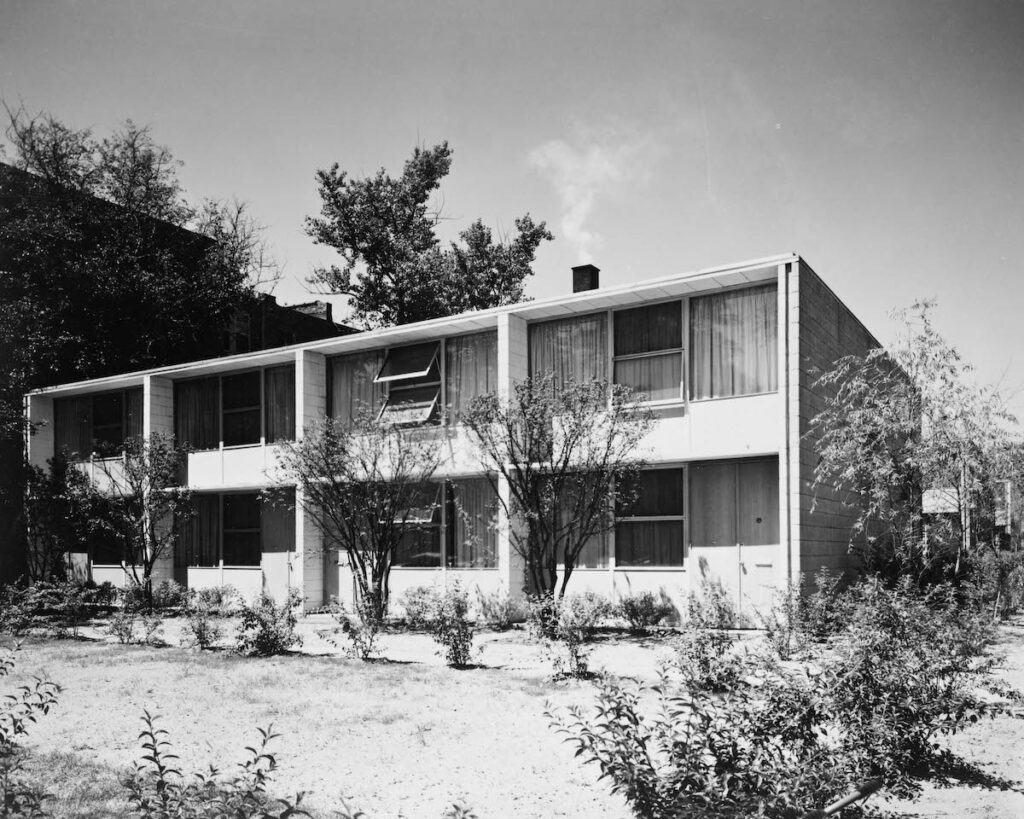
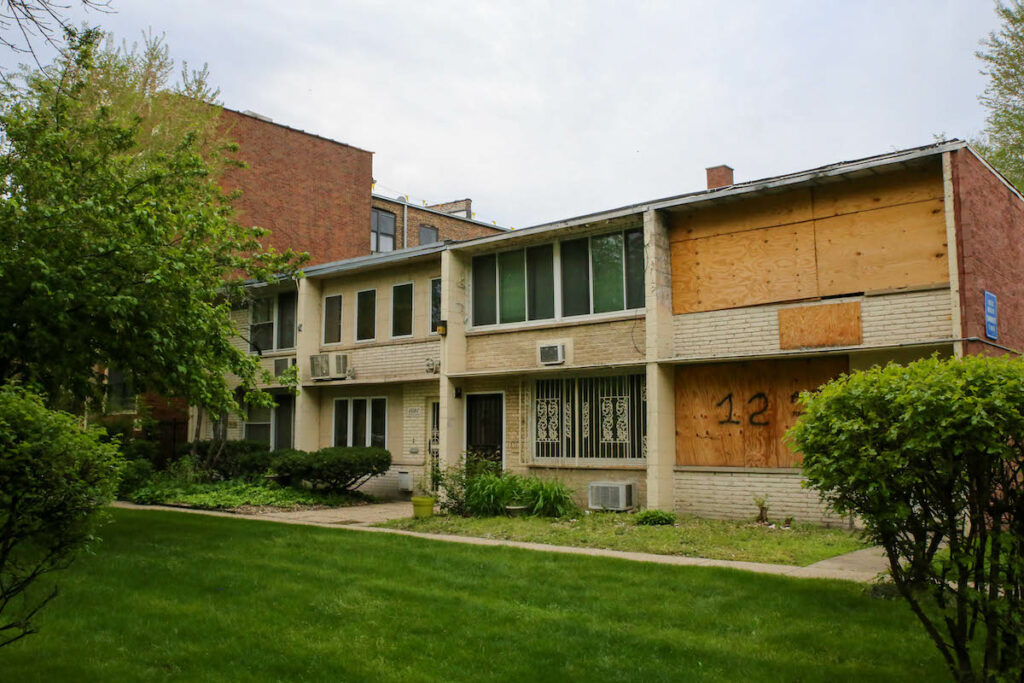
Affordable housing nonprofit Neighborhood Housing Services is acting as a developer. Earlier this year, it acquired ownership of five vacant units, property records show. When the rehab is completed, the units will be sold to home buyers “at affordable rates,” according to a Department of Housing spokesperson.
The Center for Shared Ownership (CSO) has been working with residents to re-establish board leadership. The center, which is acting as a consultant in the process, is a recent partnership between two longtime nonprofits focused on community development and affordable housing: the Chicago Rehab Network and the Chicago Community Loan Fund.
The two organizations joined forces in 2019, recognizing a “void” in resources for owners of CIDs, said CRN executive director Kevin Jackson.
The CSO’s focus is to provide education and support for CIDs and their association boards. For Jackson, that’s an essential first step toward building stabilization. Without strong governance and financial management, he said, it can be virtually impossible to secure a loan. He estimates the center has been contacted by forty CIDs to date.
It’s just one step toward the goal of preserving affordable housing.
“A shortage of affordable housing in and of itself requires an incredible, roll-up-your-sleeves [approach],” Jackson said. But as investors snap up more residential properties, he says there’s need for more policy to help promote CID ownership.
In July 2022, City Council approved a pilot program to help condo and co-op owners in South Shore refinance and rehab their units. The ordinance was introduced as part of a multi-pronged effort to minimize ongoing displacement due to the housing market and the development of the under-construction Obama Presidential Center in Jackson Park. This measure, Jackson said, is a promising first step. “For the city to come in and say, ‘We understand [those concerns], what’s the alternative?’ We hope to grow that,” Jackson said.
Anti-displacement actions around the incoming Obama Presidential Center have been concentrated in Woodlawn and South Shore. But several large developments in Kenwood and nearby Bronzeville have been announced or had ground broken, raising the specter of change and questions about what that change will bring.
The city has broken ground on the $3.8 billion Bronzeville Lakefront megadevelopment to the north, and Northwestern University is moving forward with its $100 million outpatient facility on 48th and Cottage Grove, less than one block from the Drexel House and Gardens.
“I’m concerned about the neighborhood becoming unaffordable,” said Cornelius Rogers, an owner in the Drexel House and Gardens since 2019. He said he wants the association to stabilize without becoming unaffordable. “I want all the units to be occupied,” Rogers said. “I want to make sure that it’s affordable, that it works.”
Once the rehabbed units are completed, the money from the sales will go back to the association and build a reserve fund, Butler said. He’s hopeful that it will represent a step in the right direction for both neighborhood development and preservation of affordable housing.
There’s no guarantee that city intervention would have altered the course of the Tudor Gables. The co-op had recently gotten out of housing court, obtained a mortgage, and done millions in rehabilitation work before it sold.
Jackson hopes that the CSO’s services will help other CIDs from getting to the point where they have little choice but to sell—and that the city and state will consider policies that fund and support new and existing cooperatives. That might increase housing security for long-time residents across ages and income groups.
Two years after the sale of the Gables, Johnnie Railey is one of the only former members who continue to live on the block. There’s a hint of incredulity in her voice as she talks about watching the transformation of the Gables from her current home, in the senior home on Cottage Grove.
In the early 2000s, Railey watched the senior home be built from the ground up. “I never had no idea that I would be living in one of the apartments,” she said.
Emeline Posner is a contributor to the Weekly and the Herald.



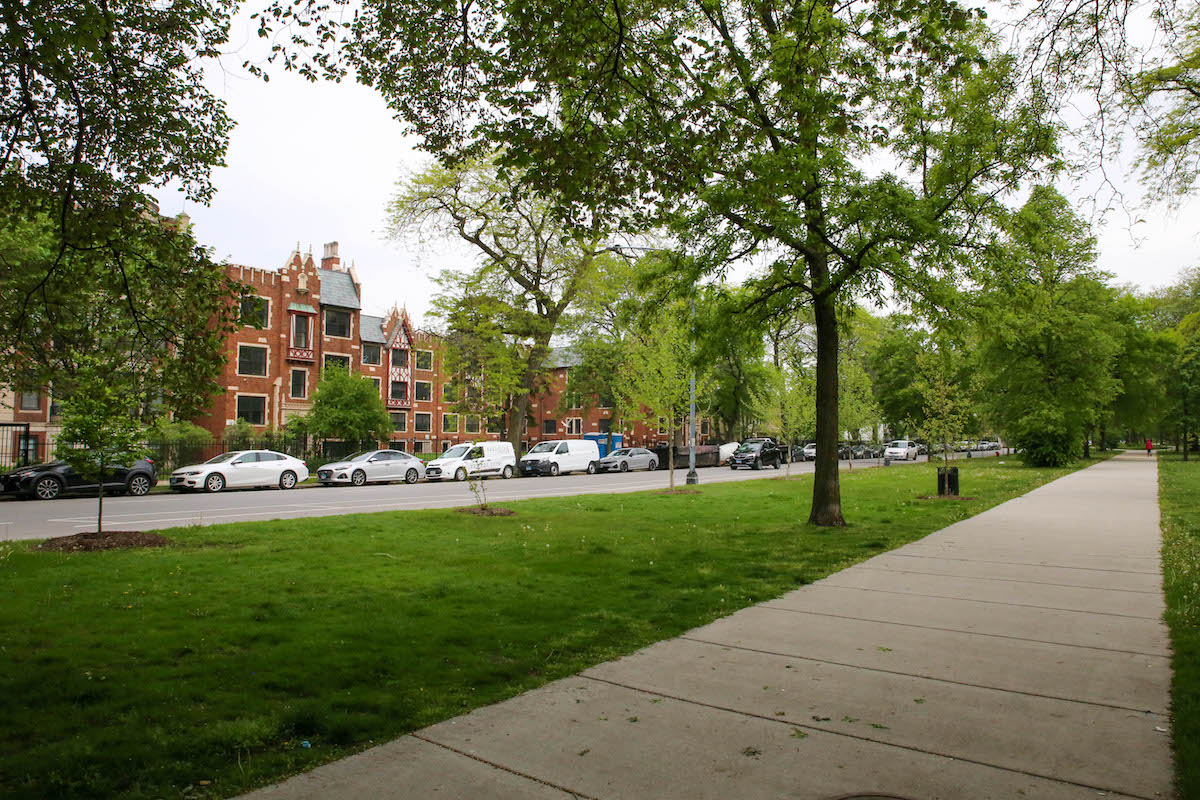
Emeline, enjoyed your article, would love if you have any updates from the stakeholders you previously spoke to on the Drexel House & Garden situation? Wondering if the plan they outlined in this article is still their plan?
I Used to Live in one of The 4812 drexel Blvd Townhouse s’ & a pipe burst in the home where i lived when They broke ground for this New Senior building